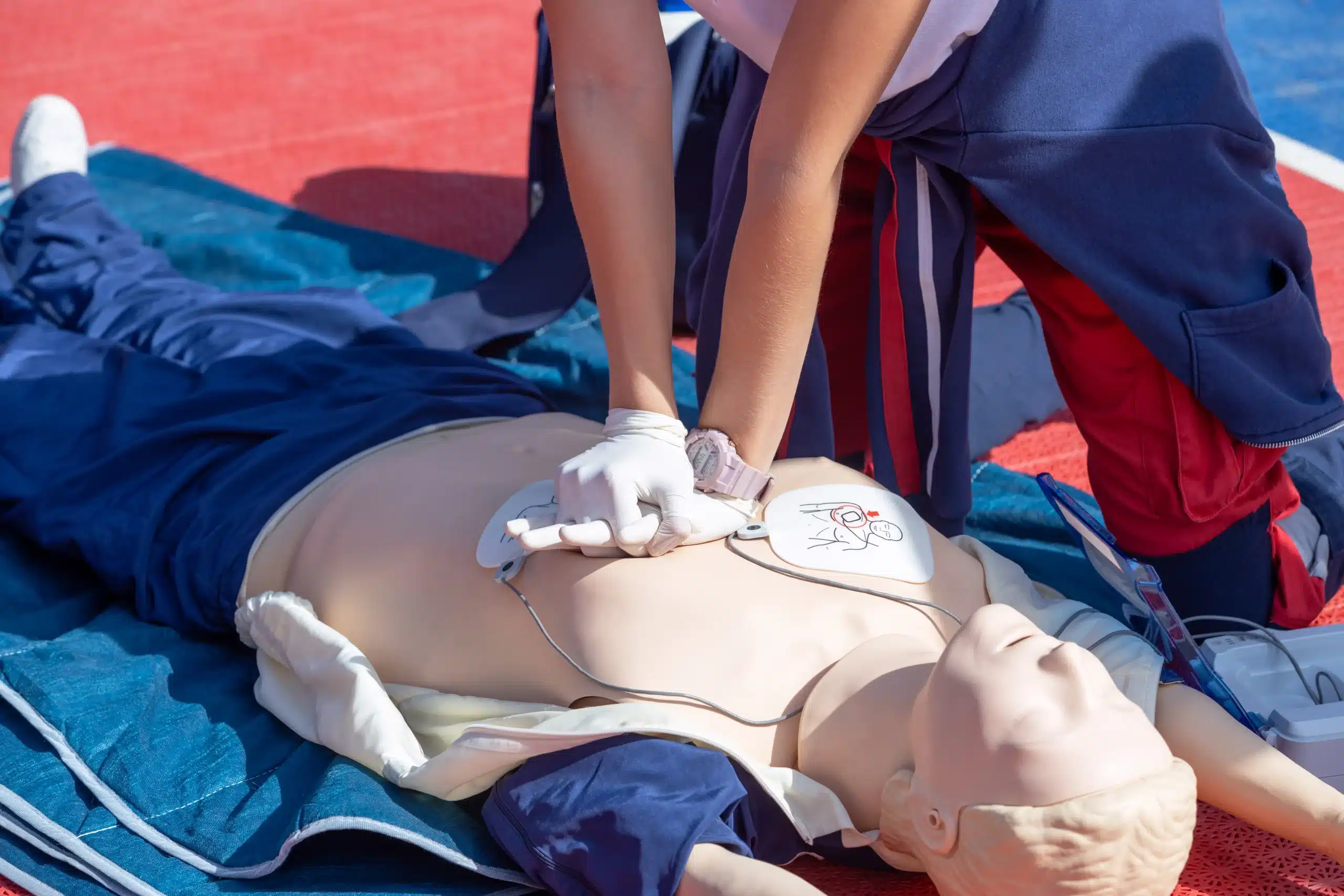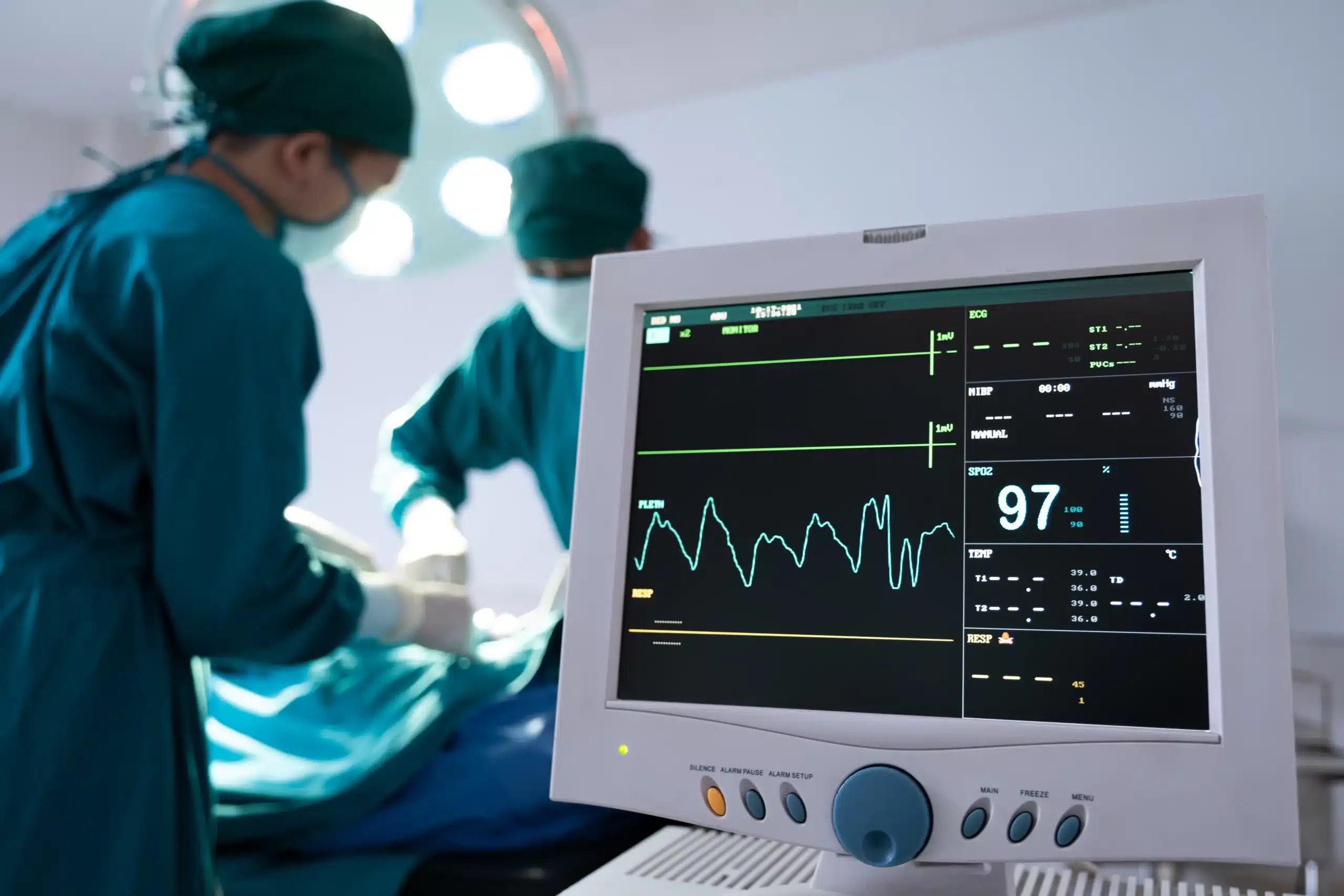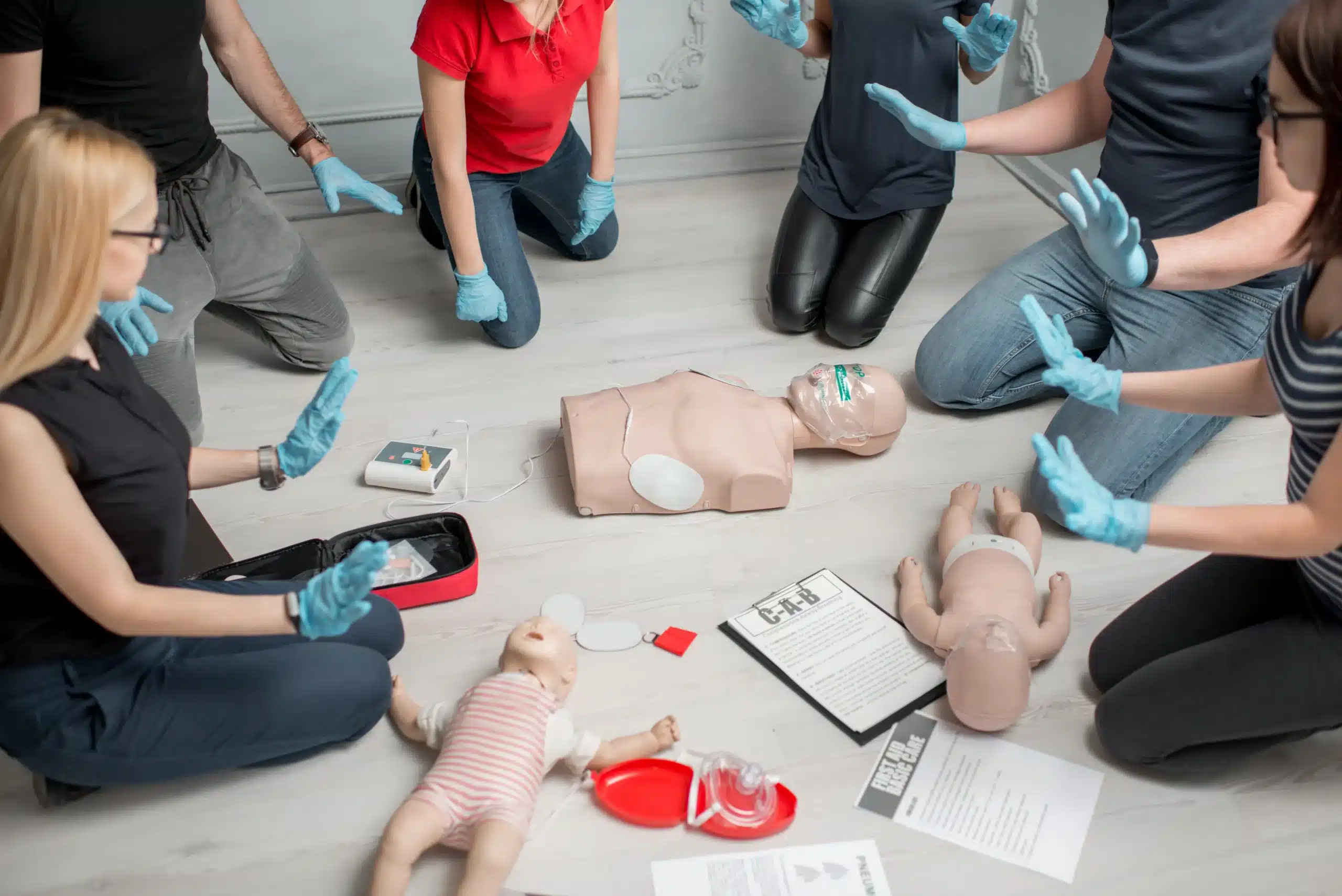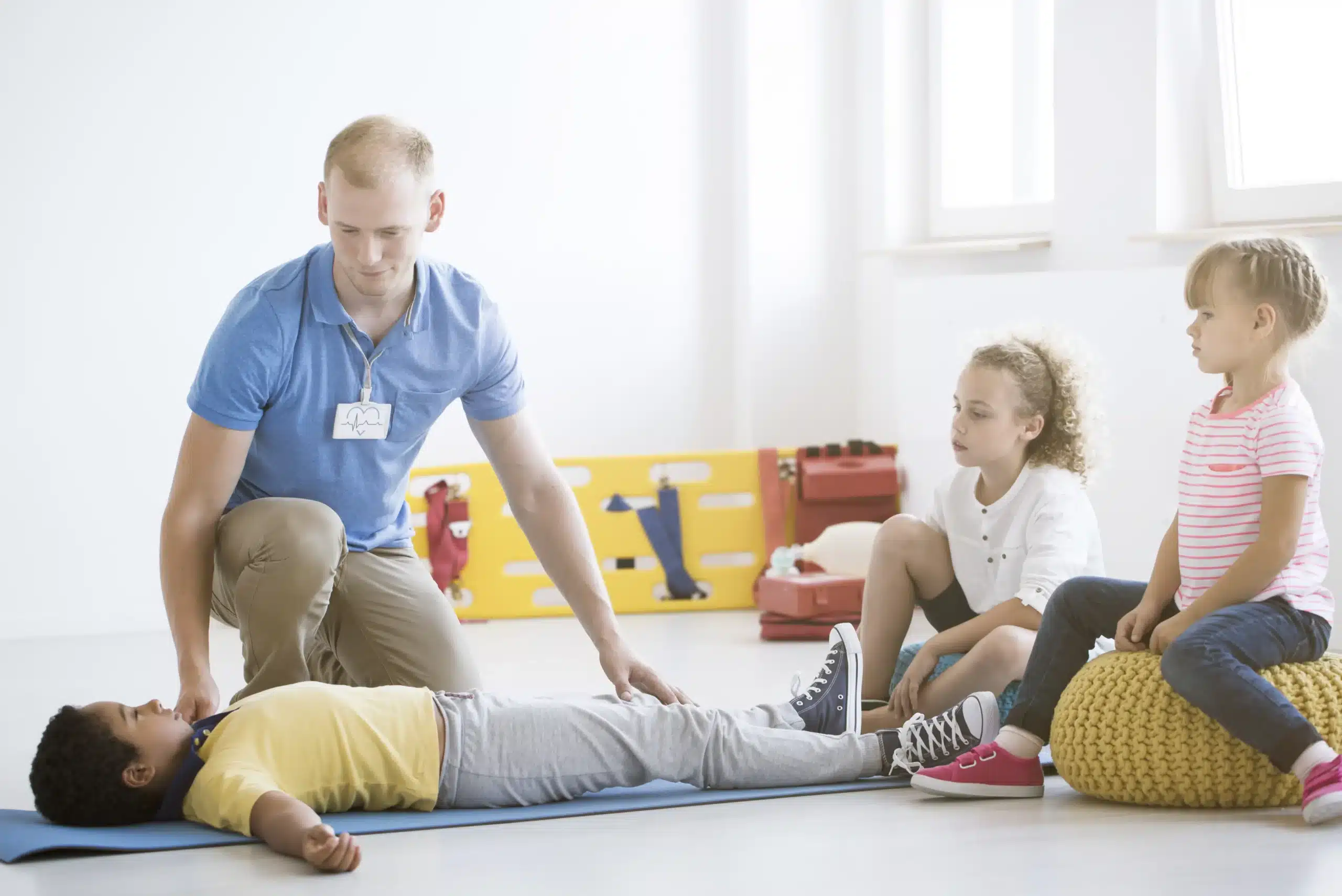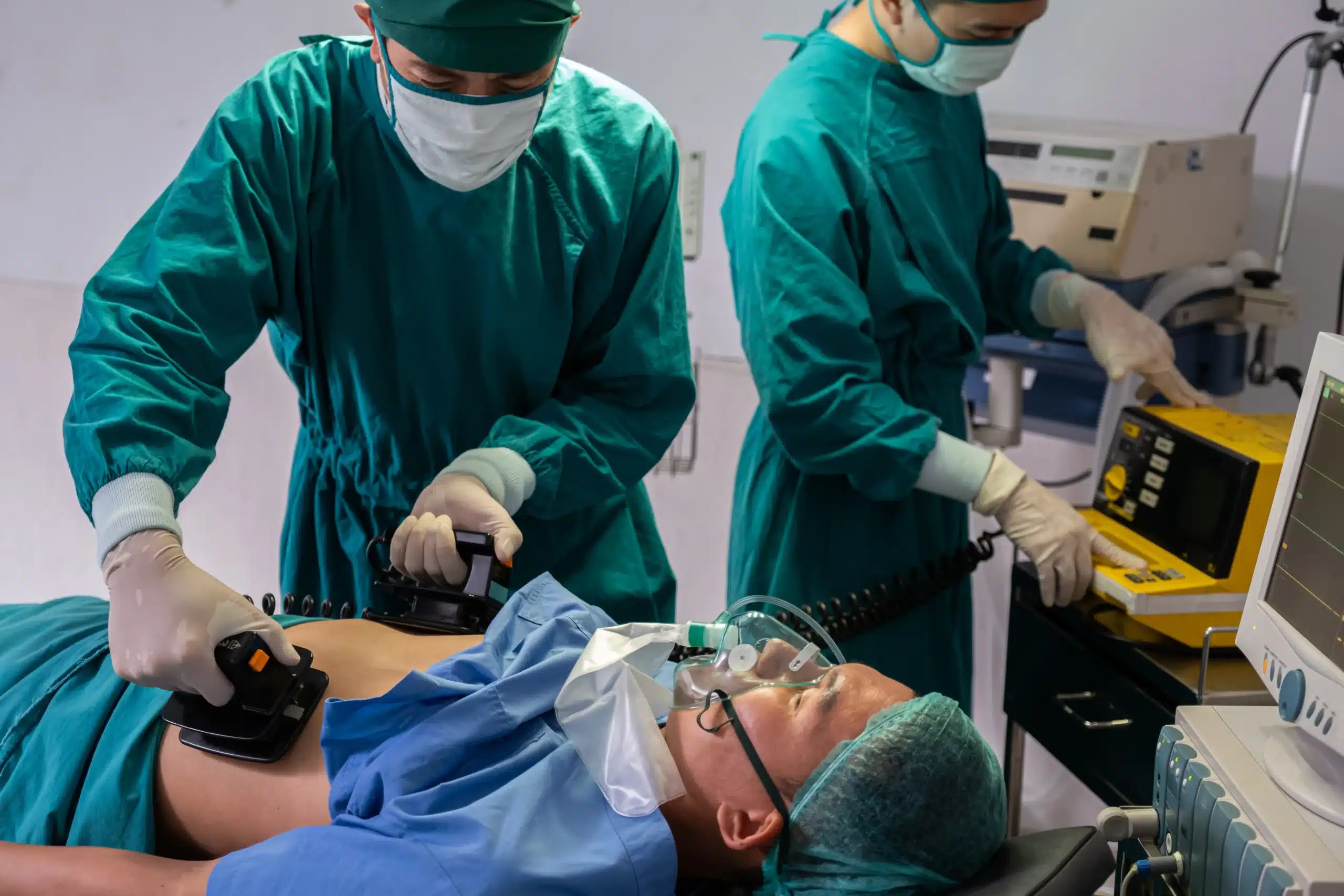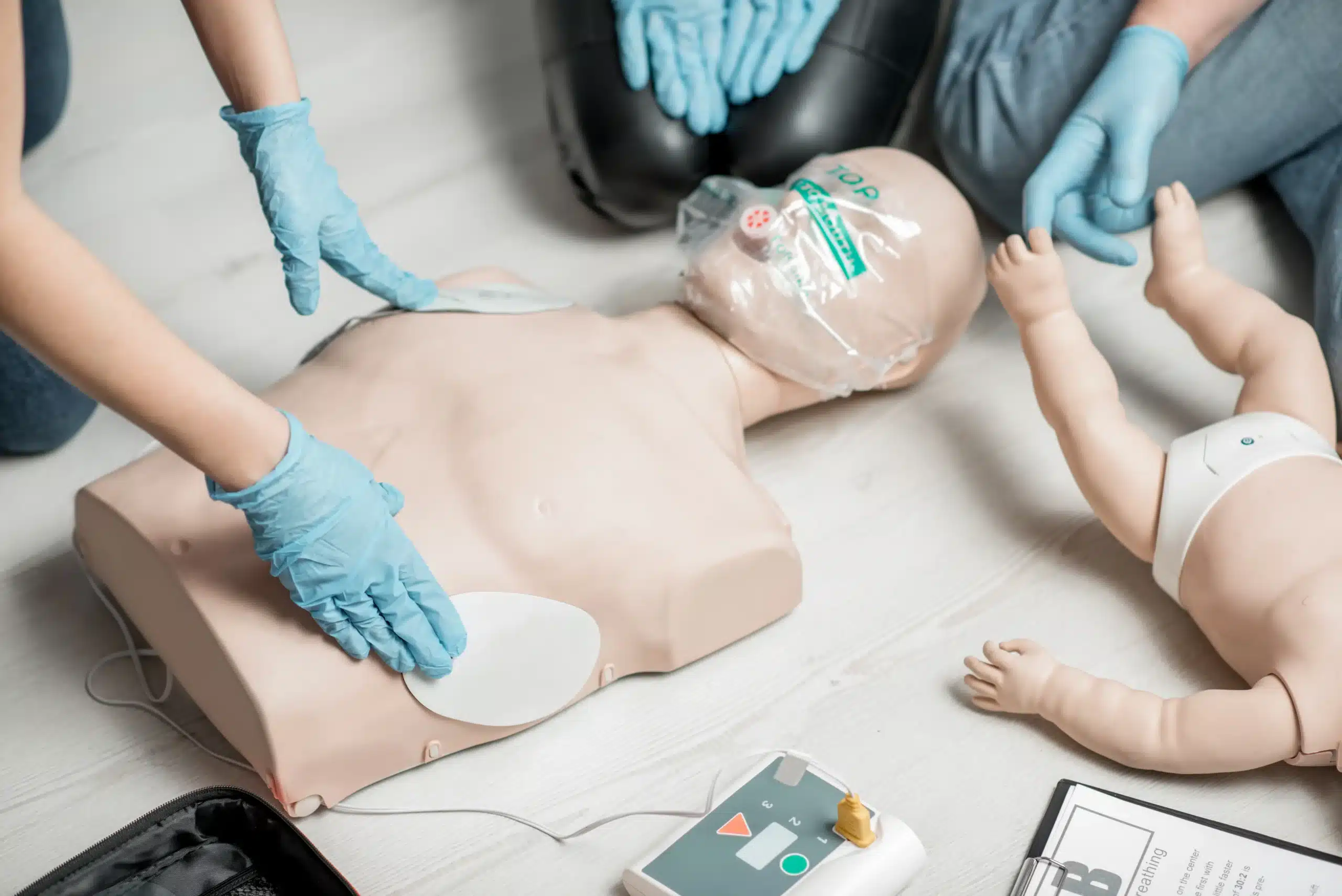Emergencies can happen anytime, anywhere. Being equipped with life-saving skills like CPR can make all the difference. If you’ve been searching for “CPR courses near me” in the Fresno, Clovis, or Madera area, you’re in the right place. This guide will walk you through the different types of CPR courses available, from basic life support to specialized certifications for healthcare providers. We’ll also discuss how to choose a reputable training provider, understand course costs, and prepare for your training experience. Let’s get you ready to respond confidently and effectively in any emergency.
Key Takeaways
- Find the right CPR course: Whether you’re a healthcare provider, work with children, or simply want to be prepared, select a course that matches your specific needs. Consider factors like BLS for healthcare providers, pediatric CPR for caregivers, or basic CPR/AED for community members.
- Choose a reputable provider: Select a training center with nationally recognized affiliations, qualified instructors, and positive reviews. This ensures your certification meets established standards and provides you with a solid learning experience.
- Maintain your CPR skills: Keep your skills sharp with regular practice and refresher courses before your certification expires. Staying up-to-date on the latest guidelines ensures you can provide effective assistance in an emergency.
Find the Right CPR Course Near You
Knowing which CPR course fits your needs is the first step. Whether you’re a healthcare professional, a concerned parent, or just want to be prepared for emergencies, there’s a course designed for you. Let’s break down the common types of CPR courses available in Fresno, Clovis, and Madera.
CPR Course Types
Adult CPR/AED
This foundational course equips you with the skills to respond to cardiac emergencies in adults. You’ll learn how to perform CPR, including chest compressions and rescue breaths, and how to use an automated external defibrillator (AED). Adult CPR/AED certification is often required for many workplaces and is a valuable life skill. Fresno CPR Classes offers CPR/AED training for individuals and groups.
BLS for Healthcare Providers
Healthcare providers, such as doctors, nurses, and EMTs, need a more advanced skillset. The BLS (Basic Life Support) for Healthcare Providers course covers CPR for adults, children, and infants, along with techniques for two-rescuer CPR and how to relieve choking. Fresno CPR Classes provides American Heart Association-certified BLS courses to meet these professional requirements.
Pediatric CPR and First Aid
For parents, caregivers, teachers, and anyone who works with children, Pediatric CPR and First Aid training is essential. This course focuses on responding to emergencies involving infants and children. You’ll learn age-appropriate CPR techniques, how to handle common childhood injuries, and basic first aid procedures. Contact us to learn more about these courses.
Workplace CPR Training
Many businesses require their employees to have CPR and First Aid certification to ensure a safe work environment. Fresno CPR Classes specializes in on-site group training, making it convenient for businesses to get their teams certified. This training can be tailored to meet specific industry regulations and workplace hazards.
Choose a Reputable CPR Training Provider
Finding the right CPR training provider is crucial for receiving high-quality instruction and a recognized certification. Here’s what to consider:
Accreditation and Certification Standards
Look for training centers affiliated with nationally recognized organizations like the American Heart Association (AHA). AHA-certified training ensures your CPR certification meets established standards and is widely accepted. This accreditation is often a requirement for healthcare professionals and many other professions. Fresno CPR Classes, for example, offers AHA-certified courses, giving you confidence in the skills you learn.
Instructor Qualifications
Experienced, certified instructors make a significant difference in your learning experience. Instructors should possess in-depth knowledge of CPR techniques and demonstrate effective teaching skills. Check if the training center’s instructors are healthcare professionals or hold specialized certifications relevant to their courses. Fresno CPR Classes offers a comprehensive range of AHA certification courses taught by qualified, experienced professionals.
Course Reviews and Reputation
Reading reviews from past students offers valuable insights into a training provider’s strengths and weaknesses. Look for feedback on the quality of instruction, course materials, and overall learning experience. A strong reputation within the community often reflects a provider’s commitment to quality training. Affordable and accessible training, coupled with positive reviews, can help you make an informed decision. Don’t hesitate to ask for recommendations from friends, family, or colleagues who have completed CPR training.
Top CPR Training Providers
Several reputable organizations offer CPR training and certification. Here are a few prominent options:
American Heart Association
The American Heart Association (AHA) is a leading authority on CPR and emergency cardiovascular care. Their courses are known for their rigorous standards and comprehensive curriculum.
American Red Cross
The American Red Cross is another well-respected organization offering a wide range of CPR and first aid courses. They provide training options for individuals, families, and workplaces.
National Safety Council
The National Safety Council offers CPR training that meets Occupational Safety and Health Administration (OSHA) requirements, making it a suitable choice for workplace safety training.
Fresno CPR Classes
Fresno CPR Classes offers courses tailored to different experience levels, ensuring community members have access to the training they need. They provide a variety of courses, including BLS, ACLS, PALS, and First Aid.
ProCPR
ProCPR offers online CPR certification courses that provide a convenient option for busy individuals seeking flexibility in their training schedule.
Understand CPR Course Costs & Certification
CPR certification is an investment in life-saving skills, so understanding the costs is important. This section breaks down average course fees, potential discounts, and what to expect regarding certification validity.
Average Course Costs
CPR class prices typically range from $40 to $100, depending on the type of certification, whether you learn in person or online, and the specific training center. For a comprehensive guide to CPR classes in Fresno, check out this resource. It offers valuable insights into local pricing and options.
Group Discounts & Financial Assistance
Many training providers offer discounts for group bookings, making it a cost-effective option for workplaces, community groups, or families learning together. Fresno CPR Classes is one such provider, so inquire about group rates when comparing options. Sometimes, financial assistance programs may be available, so it’s always worth asking.
Certification Validity & Renewal
Most CPR certifications remain valid for two years. To maintain your skills and ensure your certification remains current, take a renewal course before it expires. Choosing a course that aligns with American Heart Association guidelines ensures you receive high-quality instruction and a recognized certification.
Online vs. In-Person Training
Deciding between online and in-person CPR training depends on your learning style and schedule. Both formats have their own advantages and disadvantages.
Pros and Cons
Online courses offer flexibility, allowing you to learn at your own pace and convenience. However, they may lack the hands-on practice crucial for developing muscle memory and confidence. In-person classes provide direct interaction with instructors and the opportunity to practice skills on mannequins. Fresno CPR Classes offers both online and in-person options, allowing you to choose the format that best suits your needs.
Hands-On Practice
The benefit of hands-on learning in CPR training cannot be overstated. Using a training mannequin allows you to experience the correct hand placement, depth of compressions, and overall technique required for effective CPR. This physical practice builds the confidence and muscle memory needed to respond effectively in a real-life emergency.
What to Expect in CPR Training
So, you’ve signed up for a CPR class—congratulations! Learning CPR is empowering, and it equips you with skills that can truly make a difference. Here’s a glimpse of what awaits you:
Course Content & Duration
CPR courses blend theory and practical skills to prepare you for real-life emergencies. You’ll learn to recognize the signs of a cardiac arrest, perform chest compressions and rescue breaths, and use an automated external defibrillator (AED). Fresno CPR Classes offers a range of courses, from basic CPR/AED training for the community to advanced certifications like ACLS and PALS for healthcare providers. Class times vary, but most last between four and six hours.
Hands-On Practice & Assessment
CPR training isn’t just about lectures and videos. A significant portion of your class will be hands-on. You’ll work with a CPR training mannequin to develop muscle memory and learn the correct depth and rate for chest compressions. Don’t worry about making mistakes; your instructor will guide you. Most courses include a skills assessment where you’ll demonstrate your CPR technique on a mannequin in a simulated emergency.
What to Bring
Keep it simple. Wear comfortable clothing that allows free movement, as you’ll be kneeling and performing compressions. Bring water to stay hydrated, especially during longer sessions. You likely won’t need anything else, as all the necessary training materials are usually provided. For specific questions, contact Fresno CPR Classes directly.
CPR Training Misconceptions
One common misconception is that only medical professionals need CPR training. Anyone can learn CPR, and bystander CPR can significantly increase survival rates, especially before emergency medical services arrive. Another myth is that CPR always involves mouth-to-mouth resuscitation. While rescue breaths are part of some CPR protocols, chest compressions are the most critical element. Your instructor will answer any questions and provide the most up-to-date information.
Maintain Your CPR Skills
Learning CPR is a crucial first step, but staying sharp on those life-saving skills is just as important. Regularly refreshing your knowledge and practicing your techniques can make all the difference in a real emergency.
Refresher Courses & Continuing Education
CPR certifications, like those from the American Red Cross, are typically valid for two years. Consider signing up for a refresher course before your certification expires. These courses reinforce core concepts and update you on any changes to CPR guidelines. Fresno CPR Classes offers a variety of recertification courses to help you stay current.
Practice at Home
Regular practice is key to keeping your skills sharp between refresher courses. While you won’t have the same equipment as a classroom, you can still practice the essential steps. Review the CPR steps regularly and visualize performing compressions and rescue breaths. Even mentally rehearsing the process can improve your confidence and recall during a stressful situation. Ask a friend or family member to practice with you, walking through the steps together and providing feedback.
Stay Updated on Guidelines
CPR guidelines can change as medical knowledge advances. Staying informed about these updates ensures you’re providing the most effective care. Subscribe to newsletters from reputable organizations like the American Heart Association or follow them on social media for the latest information. Fresno CPR Classes also keeps their curriculum aligned with current guidelines, so you always receive the most up-to-date training.
CPR Training Technology
Technology offers innovative ways to supplement your CPR training and maintain your skills.
Skill Reinforcement Apps
Several apps provide interactive exercises, simulations, and feedback on your CPR technique. These can be a convenient and engaging way to reinforce what you’ve learned in a course. Look for apps developed by reputable organizations or medical professionals.
High-Fidelity Manikins & Simulation
While more common in professional training settings, advancements in high-fidelity manikins offer increasingly realistic simulation experiences. These manikins provide detailed feedback on compression depth, rate, and hand placement, helping you refine your technique and build muscle memory. Access to these tools can significantly improve your CPR proficiency.
Related Articles
- CPR Classes in Madera: Find Training Near You – Fresno CPR Classes
- CPR Classes in Fresno: Your Complete Guide – Fresno CPR Classes
- CPR & First-Aid Training in Fresno: A Complete Guide – Fresno CPR Classes
- Online CPR Classes in Clovis: Your Guide – Fresno CPR Classes
- BLS Courses in Fresno: Your Complete Guide – Fresno CPR Classes
Frequently Asked Questions
How do I choose the right CPR class for me?
The best CPR class for you depends on your specific needs. If you’re a healthcare provider, you’ll need a BLS course for Healthcare Providers. Parents, teachers, or caregivers should consider Pediatric CPR and First Aid training. For general workplace requirements or personal knowledge, an Adult CPR/AED course is a good starting point. Consider your current role and who you’ll likely be using these skills for.
What should I look for in a CPR training provider?
Look for providers offering American Heart Association (AHA) certified courses. This ensures the training meets nationally recognized standards. Also, check instructor qualifications, read reviews from previous students, and consider the provider’s overall reputation. These factors contribute to a positive and effective learning experience.
How much does CPR training cost, and how long is the certification valid?
CPR course costs typically range from $40 to $100, depending on the course type and training center. Many providers offer group discounts, so inquire about those if you’re registering with others. Most CPR certifications are valid for two years. You’ll need to take a recertification course to keep your skills current and maintain your certification.
What is the difference between online and in-person CPR training?
Online CPR training offers flexibility, allowing you to learn at your own pace. However, it often lacks the hands-on practice with a mannequin that in-person training provides. In-person classes allow for direct interaction with instructors, real-time feedback, and the opportunity to build muscle memory through physical practice. Consider your learning style and which format will best prepare you to respond confidently in a real emergency.
How can I keep my CPR skills sharp after completing a course?
Regular practice is key to maintaining your CPR skills. Consider refresher courses before your certification expires, and practice the steps regularly, even without equipment. Visualizing the process and reviewing the guidelines can help reinforce what you’ve learned. Staying updated on any changes to CPR guidelines is also important for providing the most effective care. You can do this by subscribing to newsletters from reputable organizations like the American Heart Association or following them on social media.

